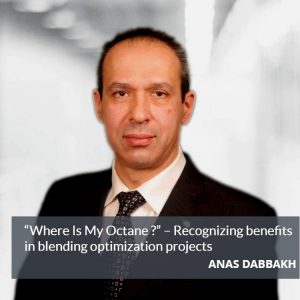By Anas Dabbakh
Refineries are a crucial step between raw crude oil and getting the gasoline into your car. There are several chemicals that have to be blended together at the refinery, such as octane, RVP, V/L, T50, etc. in order to create gasoline.
It is important to understand that oil and gas quality giveaway reduction cannot be successfully sustained without some specific changes to refinery planning, gasoline scheduling and execution processes. For example, reduction in octane giveaway will increase the refinery octane pool. Without taking actions to re-balance this pool, the refinery eventually will start giving it away again.
Having gone through multiple blending optimization and quality giveaway reduction projects, I have realized how such projects are beneficial at the refinery. And this is a very interesting question – where did all the saved octane-barrels go?
There are several strategies the refinery can undertake to “tie-up” saved octane barrels, and make giveaway reduction last:
Change blendstock purchasing from high-octane valuable to lower octane blendstocks.
This could mean changing high-octane valuable to low octane natural gasoline or butane. This may also have additional benefit from increased gasoline production, thereby lowering cost per barrel.
Lower own production of high octane or high value components.
For example, lower Reformer unit severity, or change to a different (less efficient) catalyst, etc.
Consider sales of high octane or high value components in the open market.
If lowering high value components cannot be achieved, or has limitations, then sales of this component in the open market can be considered. Obviously, market conditions should be favorable to such component sales.
Shift production profile
Shifting your production profile to more premium gasoline will consume more octane.
These strategies can be used in combination. Their successful implementation requires close coordination between production planning, scheduling and lab testing.


